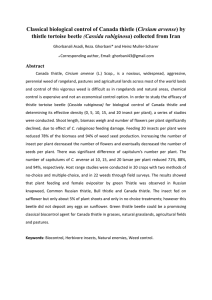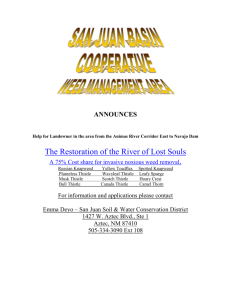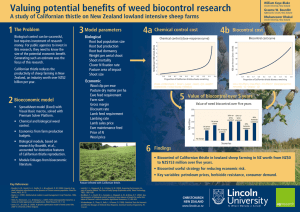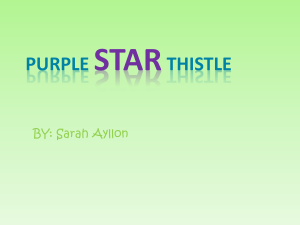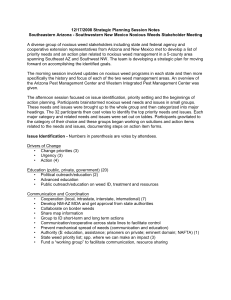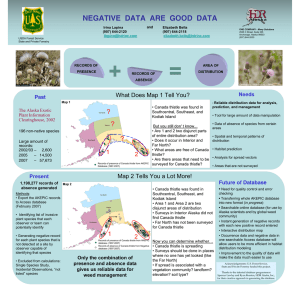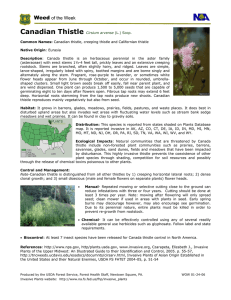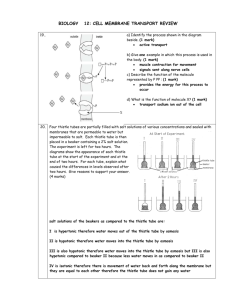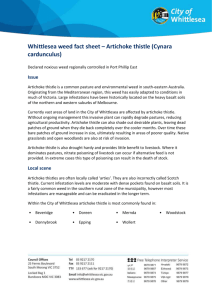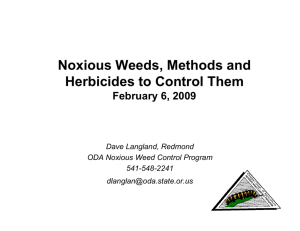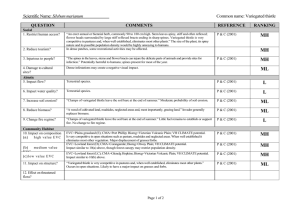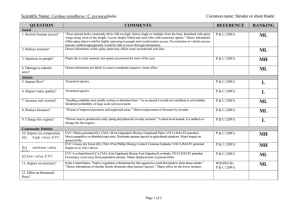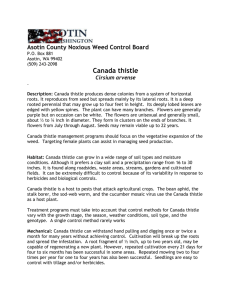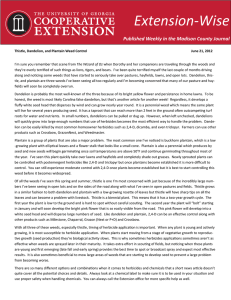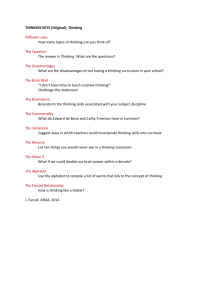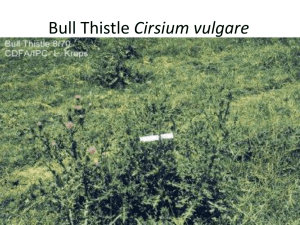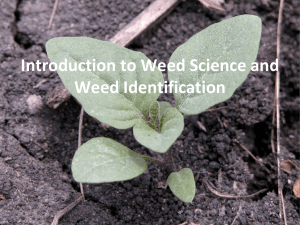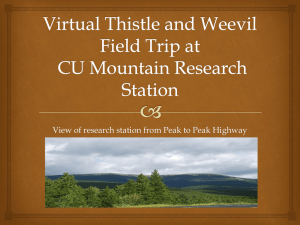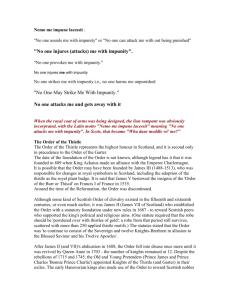Bull Thistle - Sierra Valley RCD
advertisement
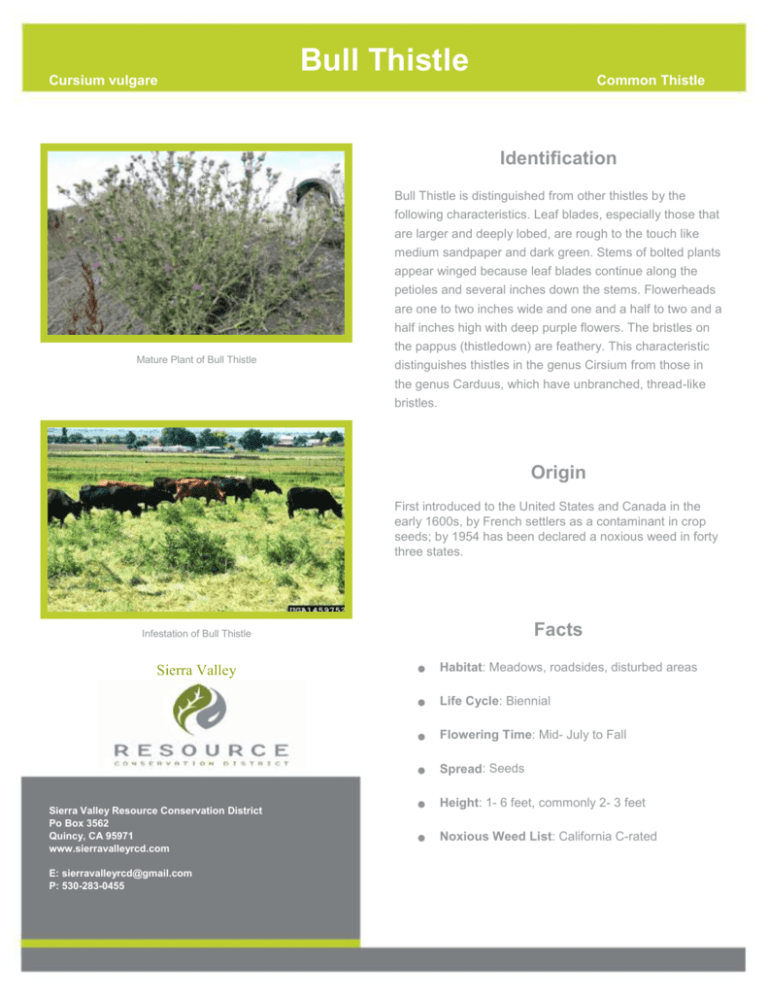
Cursium vulgare Bull Thistle Common Thistle Identification Bull Thistle is distinguished from other thistles by the following characteristics. Leaf blades, especially those that are larger and deeply lobed, are rough to the touch like medium sandpaper and dark green. Stems of bolted plants appear winged because leaf blades continue along the petioles and several inches down the stems. Flowerheads are one to two inches wide and one and a half to two and a half inches high with deep purple flowers. The bristles on the pappus (thistledown) are feathery. This characteristic Mature Plant of Bull Thistle distinguishes thistles in the genus Cirsium from those in the genus Carduus, which have unbranched, thread-like bristles. Origin First introduced to the United States and Canada in the early 1600s, by French settlers as a contaminant in crop seeds; by 1954 has been declared a noxious weed in forty three states. Facts Infestation of Bull Thistle Sierra Valley Sierra Valley Resource Conservation District Po Box 3562 Quincy, CA 95971 www.sierravalleyrcd.com E: sierravalleyrcd@gmail.com P: 530-283-0455 Habitat: Meadows, roadsides, disturbed areas Life Cycle: Biennial Flowering Time: Mid- July to Fall Spread: Seeds Height: 1- 6 feet, commonly 2- 3 feet Noxious Weed List: California C-rated Cirsium vulgare Bull Thistle Common Thistle Why is it a threat to Sierra Valley? Invasive and displaces native plant species Unpalatable and interferes sufficiently with livestock grazing lands Colonizes and maintains high population densities for up to six years Think you may have this invasive weed or seen one? Please contact your local Resource Conservation District. Sierra Valley RCD Po Box 3562 Quincy, CA 95971 (530)283-0455 Project Manager 775-722-2610 sierravalleyrcd@gmail.com A member of the staff will come identify the plant and record the weed’s location. District staff will work with you to determine the best method of control that fits your property and the invasive weed’s present. With your permission, the District will monitor the site after control measures are completed to ensure control efforts succeeded. Description Flower: In clusters at ends of branches Flower Color: pink to purple Stem: Spiny and winged Leaves: Sandpaper texture, prominent veins “NOXIOUS WEED CONTROL DEPENDS ON YOU.”
